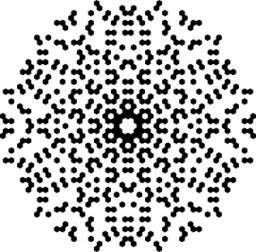Reminder and quotient
Numbers A = 135 and B = 315 are given. Find the smallest natural number R greater than one so that the proportions R:A, R:B are with the remainder 1.
Final Answer:

Tips for related online calculators
Do you want to calculate the least common multiple of two or more numbers?
Need help calculating sum, simplifying, or multiplying fractions? Try our fraction calculator.
Do you want to perform natural numbers division - find the quotient and remainder?
Need help calculating sum, simplifying, or multiplying fractions? Try our fraction calculator.
Do you want to perform natural numbers division - find the quotient and remainder?
You need to know the following knowledge to solve this word math problem:
algebraarithmeticnumbersGrade of the word problem
Related math problems and questions:
- Reminder and quotient
 There are given the number C = 281, D = 201. Find the highest natural number S so that the C:S and D:S are with the remainder of 1.
There are given the number C = 281, D = 201. Find the highest natural number S so that the C:S and D:S are with the remainder of 1. - Divisible without remainder
 Determine the number by which all these numbers, 22, 18, 25, 15, 35, and 10, are divisible without remainder. The number is greater than 1.
Determine the number by which all these numbers, 22, 18, 25, 15, 35, and 10, are divisible without remainder. The number is greater than 1. - A number 8
 A number K is such that when it is divided by 27, 30, or 45, the remainder is 3. Find the smallest possible value of K
A number K is such that when it is divided by 27, 30, or 45, the remainder is 3. Find the smallest possible value of K - Remainders
 It is given a set of numbers { 200; 261; 331; 345; 487; 554 }. Divide these numbers by number 80 and determine a set of remainders. As a result, write the sum of these remainders.
It is given a set of numbers { 200; 261; 331; 345; 487; 554 }. Divide these numbers by number 80 and determine a set of remainders. As a result, write the sum of these remainders. - Z9–I–1
 All nine fields of given shape are to be filled with natural numbers so that: • each of the numbers 2, 4, 6, and 8 is used at least once, • four of the inner square boxes containing the products of the numbers of adjacent cells of the outer square, • in t
All nine fields of given shape are to be filled with natural numbers so that: • each of the numbers 2, 4, 6, and 8 is used at least once, • four of the inner square boxes containing the products of the numbers of adjacent cells of the outer square, • in t - Ordered pairs
 Given: Set T = {(1,2), (2,3), (3,4), (4,5), (5,5), (6,7), (6,6), (7,8), (8,9), (9,9), (9, 10), (11,12), (12,13), (13,14), (15,16), (16,16), (17,18), (18,19), (20,21)} Find the probability of having an ordered pair wherein the second element is greater tha
Given: Set T = {(1,2), (2,3), (3,4), (4,5), (5,5), (6,7), (6,6), (7,8), (8,9), (9,9), (9, 10), (11,12), (12,13), (13,14), (15,16), (16,16), (17,18), (18,19), (20,21)} Find the probability of having an ordered pair wherein the second element is greater tha - Decimal number
 X y/10 is a fractional number that is greater than 6.895 but smaller than 7.8. If x and y are both single-digit natural numbers and x < y, then find the numbers.
X y/10 is a fractional number that is greater than 6.895 but smaller than 7.8. If x and y are both single-digit natural numbers and x < y, then find the numbers.
